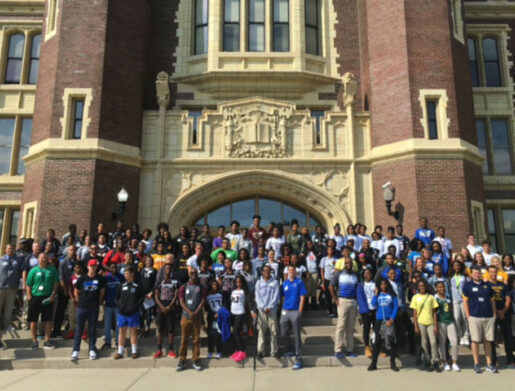SUSTAINABLE COMMUNITY SCHOOLS
Sustainable Community Schools: Our alliance builds on more than 20 years of work designing and implementing “full service community schools” in high poverty neighborhoods. Our model is based on the right of every child to attend a high-quality Sustainable Community School in their neighborhood. That model includes the following critical elements of sustainable community schools.
- Curriculum that is engaging, culturally relevant and challenging. It includes a broad selection of classes and after-school programs in the arts, languages, and ethnic studies, as well as AP and honors courses, services for English Language Learners, special education, GED preparation and job training.
- High quality teaching, not high stakes testing, is emphasized. Appropriate assessments are used to help teachers meet the needs of students, and educators have a real voice in professional development.

- Wrap-around supports such as health care, eye care and social and emotional services are offered to assist learning. They are available before, during and after school and are provided year-round to the full community.
- Providers are accountable and culturally competent. Positive discipline practices such as restorative justice and social and emotional learning supports are stressed so students grow and contribute to the school community and beyond. Suspensions and harsh punishments are eliminated or greatly reduced.
- Transformational parent and community engagement is promoted so the full community actively participates in planning and decision-making. This process recognizes the link between the success of the school and the development of the community as a whole.
- Inclusive school leadership who are committed to making the Community School strategy integral to the school’s mandate and functioning. They ensure that the Community School Coordinator is a part of the leadership team and that a Community School Committee (Committee)—which includes parents, community partners, school staff, youth, and other stakeholders that are representatives of the school’s various constituencies—has a voice in the planning and implementation of the strategy.
